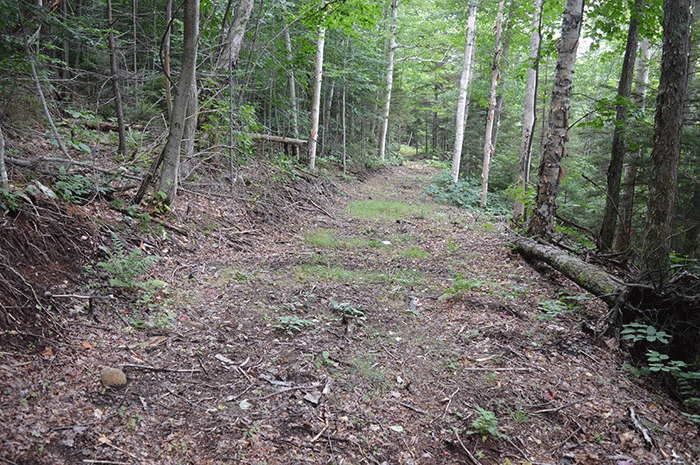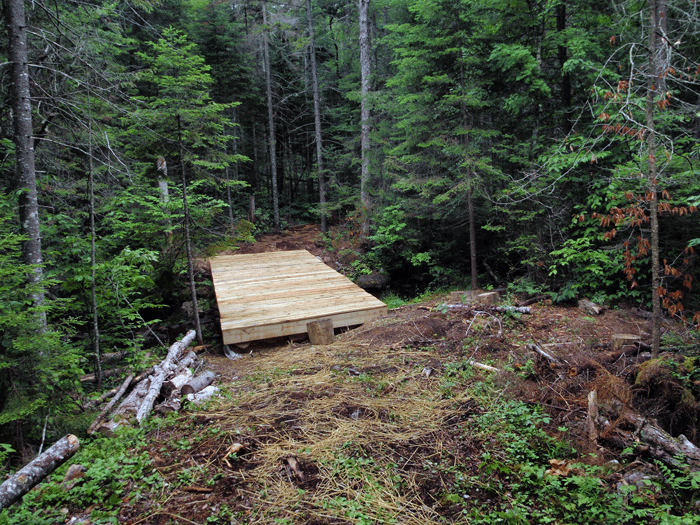On December 1st, Judge Gerald Connolly, of State Supreme Court in Albany County, issued his decision in the lawsuit brought by Protect the Adirondacks against the NYS Department of Environmental Conservation and Adirondack Park Agency alleging that construction of a network of new class II community connector snowmobile trails violated Article 14, Section 1, of the NYS Constitution, the forever wild provision on the Adirondack Forest Preserve. Judge Connolly ruled in favor of the state agencies and upheld current construction of the class II community connector trail network as lawful and consistent with the forever wild clause.
Click here to read the decision.
Protect the Adirondacks has until early January to file a notice of appeal to preserve its ability to appeal at a later date. The Board of Directors is reviewing the decision and anticipates making a decision before that.
At a later date, Protect the Adirondacks will publish its review and assessment of Judge Connolly’s decision.
Protect the Adirondacks is deeply disappointed in this decision and believes it will unleash extensive ecological damage on the Forest Preserve, create long-term environmental damage, and set a precedent for future destruction of the Forest Preserve by the very agencies that are supposed to protect it.
The trial focused on management of the public “forever wild” Forest Preserve by the NYS Department of Environmental Conservation and Adirondack Park Agency. These agencies are currently building a network of 9-12 foot wide class II community connector snowmobile trails (Class II trails) on the Adirondack Forest Preserve that can require cutting down upwards of 1,000 trees per mile and extensive grading and flattening of the land with heavy equipment. The state plans to build hundreds of miles of these trails.
The lawsuit was filed in 2013. A trial ran for 13 days in March and April, 2017. After the trial ended, a complete set of almost 1,700 pages of trial transcripts was produced and these have been posted on PROTECT’s website. Both the Plaintiff and Defendants submitted Proposed Findings of Fact and Conclusions of Law to the court on July 31st. Copies of both sides’ papers have been posted on PROTECT’s website.
The focus of the trial was two-pronged: 1) issues involving the number of trees cut, including meaning of “timber” in Article 14, Section 1, and what constitutes a tree that is protected under the Constitution; and 2) the impacts on the Forest Preserve from construction of the network of Class II trails due to extensive terrain and habitat alteration. Although the trial covered only the trails that had been previously approved and built, or were still under construction, the outcome of the case is likely to determine the fate of hundreds of miles of additional Class II trails that the State intends to build, and the fate of the entire Forest Preserve.
Although the State argued that only about 6,200 trees had been approved to be cut on about 29 miles of trails, PROTECT proved at trial that over 25,000 trees will be cut, if trees under 3″ DBH are counted, and that 34 miles of Class II trails are being built so far, clearing over 37 acres of forever wild land. The Plaintiff’s case also proved that the construction had caused extensive damage, such as erosion and permanent alteration of forest habitat, despite the Defendants’ claims that they had minimized the harm that they caused.

Typical stretch of new class II community connector snowmobile trail recently constructed in the Adirondack Forest Preserve.
Construction of a new network of road-like class II trails is the cornerstone of Governor Andrew Cuomo”s historic expansion of motor vehicle use in the Forest Preserve. The state plans to build hundreds of miles of these road-like trails in the years ahead. This decision will see the state go into the Forest Preserve next spring with chainsaws blazing and track hoes humming to continue to build this trail network.
This lawsuit is an effort by PROTECT to stop environmental damage on the Forest Preserve that would have continued unabated without legal intervention. Construction of this road-like trail network was limited in 2016 and prevented entirely in 2017. PROTECT believes in the merits of this case and disagrees with the court’s decision.
Long-term, the public should be concerned about the class II trail network because as the snowmobiling season continues to contract and because a number of these snowmobile trails are being built in areas without reliable snowfall due to climate change, there will be immense pressure to open them up for ATV riding, which will cause even greater environmental degradation.






